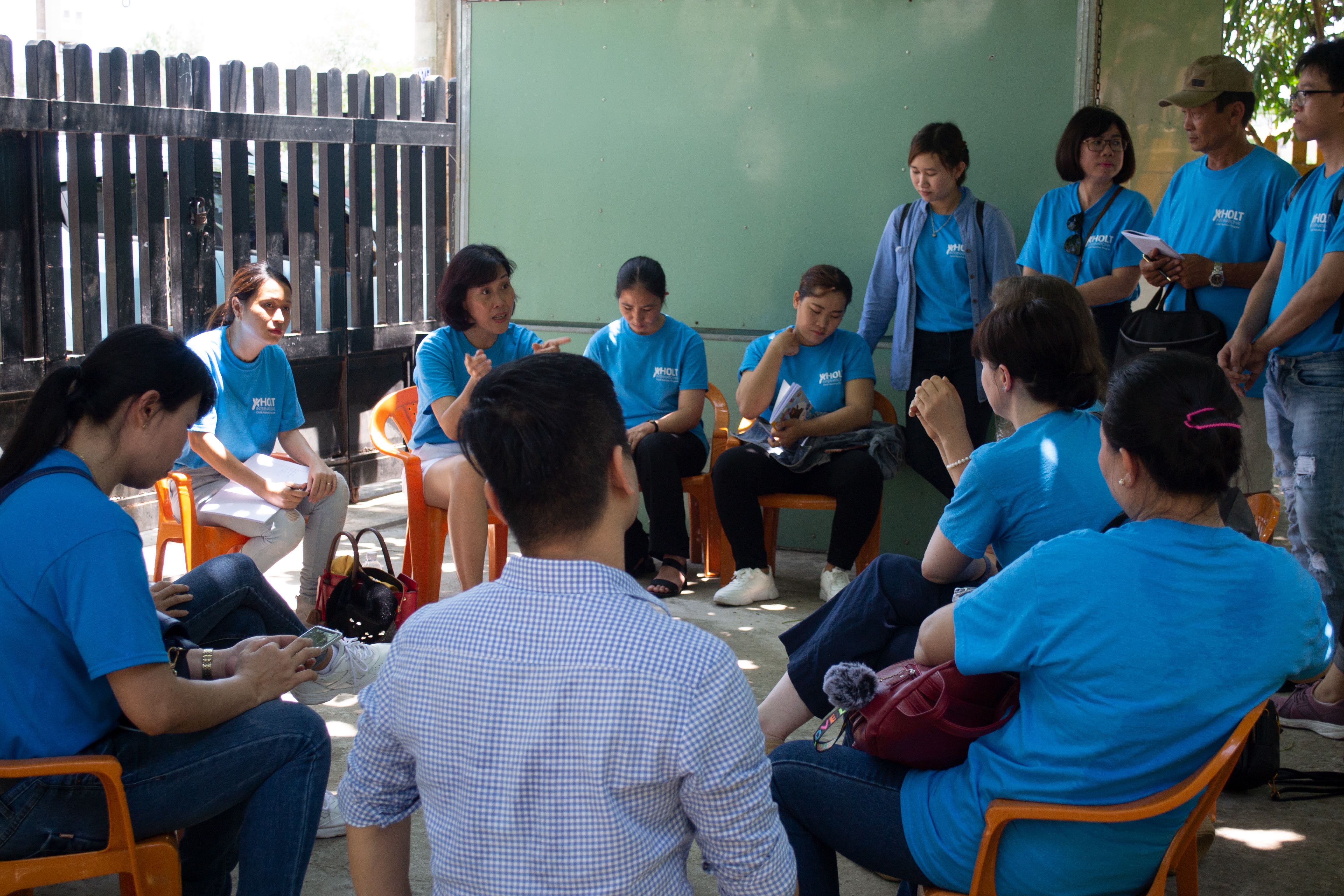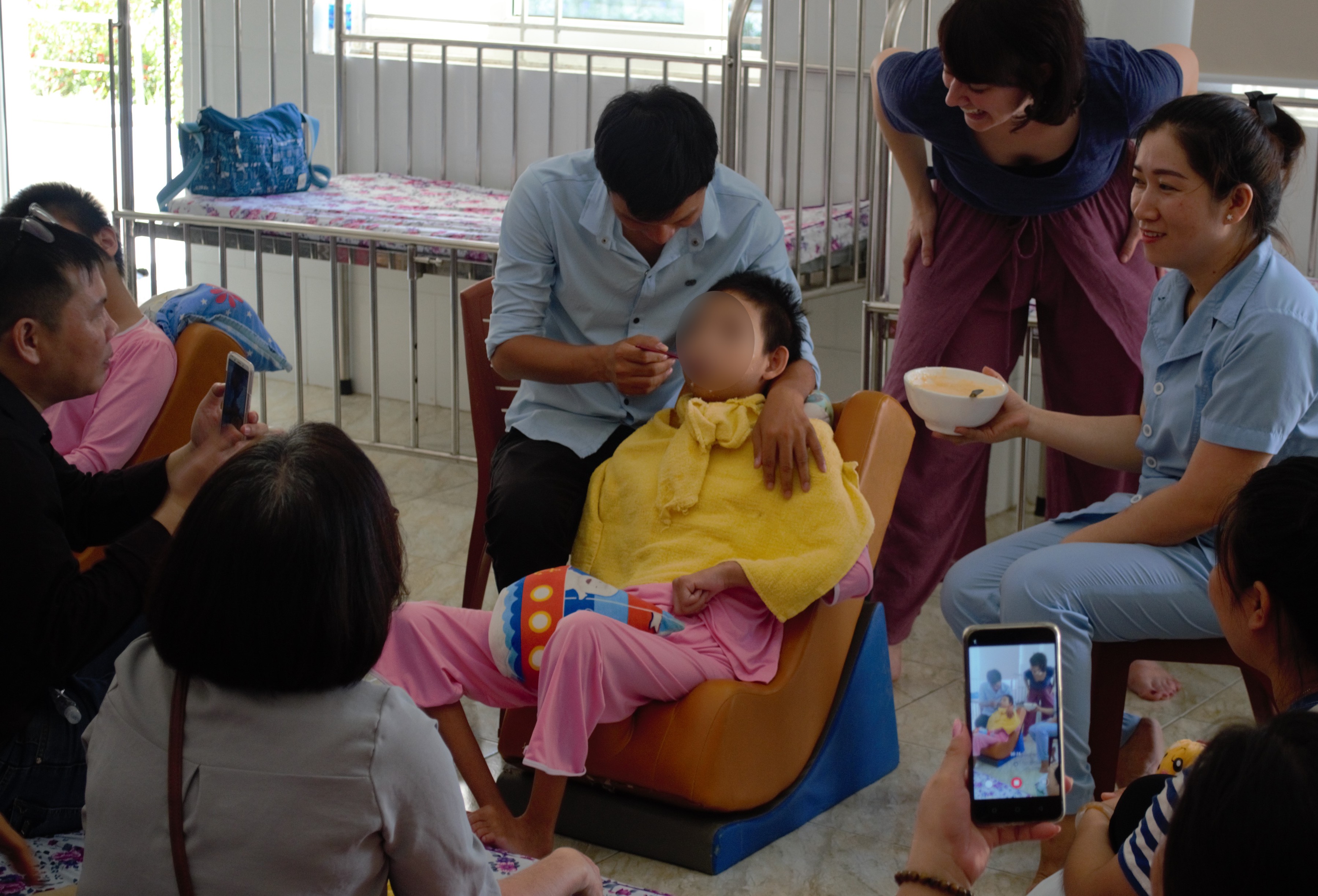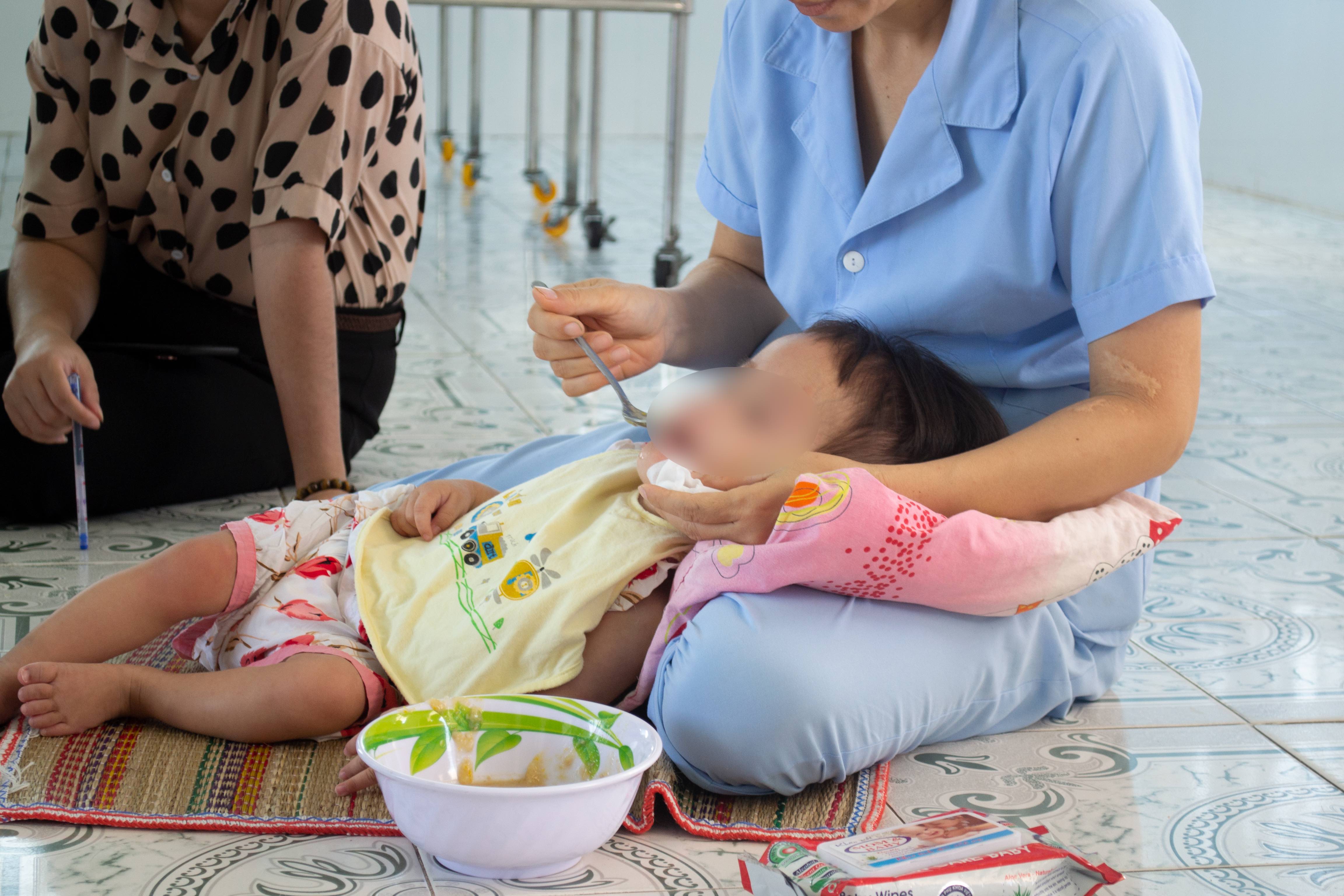In spring 2019, Holt’s nutrition program released “Holt International’s Feeding and Positioning Manual: Guidelines for Working with Babies and Children.” The first of its kind, this publication will have a lasting and life-changing impact on the lives of children in orphanages and impoverished communities around the world.
As *Lanh lay on his back, his wide, fearful eyes filled with tears as he choked on each bite of food spooned into his mouth.
“It was hard to watch,” says Emily DeLacey, Holt’s director of nutrition and health programs.
This was how Lanh ate three times a day. Every single day.
Lanh’s caregivers knew something was wrong, but they didn’t know how else to feed a child with cerebral palsy. With his arms and legs so rigid and tightly pressed against his body, they thought it would be easier for him to remain laying in his bed, instead of trying to move him.
“His caregivers said they thought this was the only way to feed him,” Emily says. She knew they were doing their very best, and just needed some extra support.
Feeding, and lack of education about it, is an issue for thousands of children around the world who are living in poverty or in orphanage care — especially children with special needs.
“They care so much about the children, and with just a bit of education, resources and practice, they can dramatically improve the children’s lives.”
Emily DeLacey, Holt’s director of nutrition and health programs
“They care so much about the children,” she says, “and with just a bit of education, resources and practice, they can dramatically improve the children’s lives.”
“Children are sick, malnourished and stressed because of how they are being fed,” says Emily, who over the past four years traveled around the world with Holt’s nutrition program team — visiting children living in orphanages and impoverished communities.
Everywhere they went, they kept seeing children being fed while lying down — time and time again.
They knew this issue would require a big solution — the root of which would be to empower children’s parents and caregivers with training on how to properly feed children who have special needs. But a resource like this didn’t exist. So they decided to create one.
In spring of 2019, Holt’s nutrition program released Holt International’s Feeding and Positioning Manual: Guidelines For Working With Babies and Children — the first ever feeding manual created specifically for children living in impoverished communities and orphanage care. Specifically for children like Lanh.
Developed through the experience of specialists in the field and based on research conducted at more than 40 orphanages and community sites in seven countries, this 422-page manual is comprised of four parts: Feeding Fundamentals, Feeding Across the Ages, Special Populations and Topics, and Resources for Caregivers and Communities. While the manual is evidence-based and extensive, it is written and formatted in a way that is digestible and easy to understand.
“This is the only manual in the world to focus on children’s needs around feeding, positioning, interaction and how combined, that impacts their development,” says Emily, a registered and licensed dietitian with a master’s degree in nutrition who is currently pursuing her PhD in epidemiology and population health from the London School of Hygiene and Tropical Medicine. “This manual will be such an asset to making caregivers’ jobs easier — and the positive outcomes for the children are infinite!”
Holt’s nutrition program will have the manual translated into the primary language of every country where Holt works — meaning this amazing resource will eventually be available in Amharic, Mongolian Cyrillic, Tagalog and more!
The English manual is now available online, and Emily has already received feedback from nutrition and child care professionals across the world, from Pakistan to The Netherlands to Nepal, thanking her for providing this resource.
“I saw the new Holt feeding and positioning guide and was thrilled,” says Hollie Small, an adoptive parent and professor of early childhood intervention and special education who is currently working in Myanmar. She shared it with her network of colleagues in Myanmar. “The handbook is making such a huge difference in the lives of children and families around the world,” she says. “I’ve received countless emails thanking me for sharing the resource.”

While the manual’s primary goal is to train orphanage caregivers and parents in impoverished communities, the information is not solely reserved for these settings. It can serve as a resource for any family, anywhere, that needs help feeding a child — with or without special needs — including adoptive (and non-adoptive) families in the U.S.
Entire sections of the manual focus on best practices for breastfeeding, bottle-feeding, teaching children to use a spoon or cup, and sensory and developmental milestones that parents can use as a guideline to assess their child’s growth.
With just a little support from his caregivers, Lanh even began learning how to feed himself with a spoon. He was capable of so much more than they imagined. All he needed was an opportunity to try.
“I hope that this manual reaches all the people who need some ideas around feeding and positioning so that children around the world are able to have safer and more enjoyable mealtimes,” Emily says. “The outcome will be that children get fewer infections, go to the hospital less, grow better and develop life skills that will carry on with them as they grow into adulthood!”
Already, Lanh’s life has dramatically changed.
Using strategies from Holt’s new feeding and positioning manual, after its pilot presentation in Vietnam, Lanh’s caregivers began to make changes. Right away, they started feeding Lanh while upright in a chair, wrapping towels under and around him for support.

While in Vietnam for Holt’s nutrition program, Emily had the opportunity to witness this transformation for Lanh.
“In that moment, he absolutely sparkled with joy to be on his caregiver’s level, making eye contact and receiving attention!” Emily says, recalling the moment Lanh first ate sitting up. “I also watched the caregivers making vital connections — they saw the look on Lanh’s face and how much happier he was to be upright.”
With just a little support from his caregivers, Lanh even began learning how to feed himself with a spoon. He was capable of so much more than they imagined. All he needed was an opportunity to try.
“He just lit up and laughed the first time he realized that he had just fed himself his first bite of food ever!” Emily says.
Through Holt’s training manual — and the dedicated caregivers who learned from it — Lanh’s life has changed forever. And it will do the same for thousands and thousands of children around the world.
Megan Herriott | Copywriter
*Child’s name changed and children’s faces blurred for confidentiality

Support Holt’s Child Nutrition Program
Your gift to Holt’s child nutrition program will provide life-changing nutrition and feeding support to children living in poverty and in orphanages around the world.





